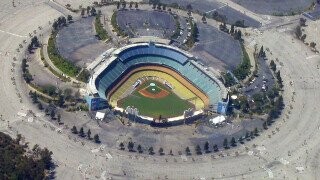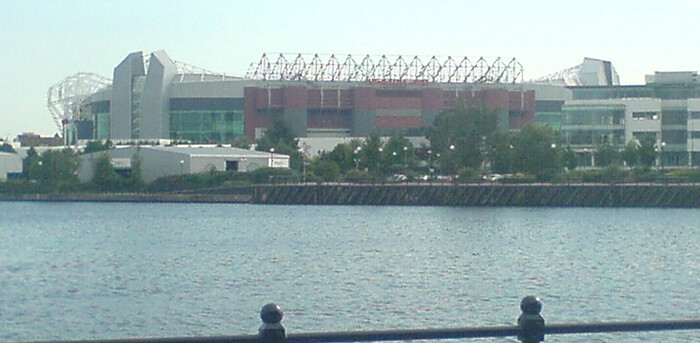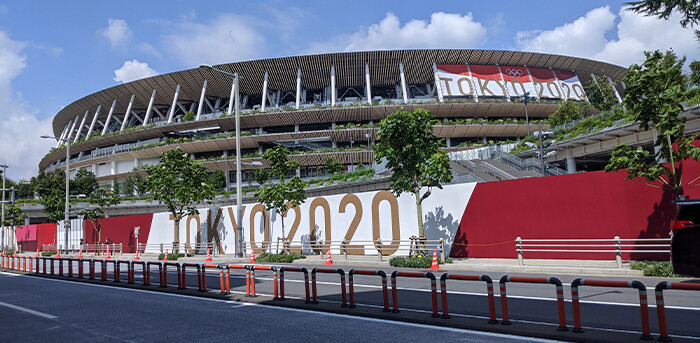15 Sordid Stories About The Building of Sports Stadiums

Ideally, sports stadiums should be a jewel in any city. Ballparks and arenas, when done right, are beautiful achievements of architecture that promote civic engagement, or at least give the grinches among us a safe space to boo Santa Claus. But all that beauty often comes at a cost. Here are 15 stadiums with more than a few skeletons in their closets:
Camden Yards Sets A New Standard

Wikimedia Commons: Wikieditor101
Oriole Park at Camden Yards is close to the Platonic ideal of a place to catch a ballgame, nestled comfortably in Baltimore's beautiful inner harbor and alive with the smell of steamed crabs and Old Bay. It's widely regarded as THE model for new parks…in more ways than one. Built in 1992, Camden Yards basically provided the prototype for billionaire owners to pick city governments' pockets for new stadiums.
Dodger Stadium Bulldozes An Entire Community

Wikimedia Commons: IIP Photo Archive
As they say in Clue, communism is just a red herring. And the city of Los Angeles used anti-communism as a justification to destroy the predominantly Mexican-American community of Chavez Ravine to build Dodger Stadium.
Seattle's Sick's Stadium
Built by a beer magnate on the arson site of Seattle's Duggdale Field, Sick's Stadium was a gem of a minor league ballpark that couldn't quite translate in a major league one (they were still installing bleachers on opening day). The Pilots played one season here before moving to Milwaukee, but honestly? We're still hung up on how “name of the stadium” it is that Sick's Stadium was built by a beer magnate on an arson site.
Funding the Kingdome's Replacement Whether Voters Like It Or Not

Wikimedia Commons: Robert Ashworth
The Kingdome was the iconic park that housed the iconic 90s Seattle Mariners led by Ken Griffey, Jr. and Randy Johnson. But even then, management threatened to sell/move the team if a new stadium didn't replace the Kingdome. Voters rejected public funding, but since when did voting on something mean anything in America? The King County Council called an emergency session when the Mariners made the 1995 playoffs and forced a deal. As activist Chris Van Dyk says, “they steamrollered public opinion to a point where, hey, I was even rooting for 'em.”
Climate Pledge Arena's Crazy Resumé
If it seems like it has been ordained by God that there simply can't be a stadium in the city of Seattle without it being a little weird, well, we can't prove that's not the case. From Coliseum for the 1962 World's Fair to home of the 1979 NBA Champion Seattle SuperSonics to “not quite good enough to keep the Sonics around” to home of the WNBA's Seattle Storm and NHL's Seattle Kraken, it has been quite the ride for Seattle's arena.
Soldier Field Lands a Spaceship (Over A Fresh Playoff Loss)

Wikimedia Commons: Sea Cow
Nicknamed the “mistake by the lake” and “eyesore on Lakeshore” by some truly corny Chicagoans, the “spaceship” renovation on Soldier Field began the very same night as a Bears playoff loss. Somehow, that wasn't the most insane construction project of mayor Richard M. Daley's tenure.
The Staples Center Was Partially Pitched As A Modern-Day Church
In the 1990s, LA was looking for something to revitalize downtown. Cardinal Roger Mahony, who was hoping to get a new cathedral built, was asked by the developers to help convince the City Council about Staples Center. The Cardinal said “…we needed to get something like Staples in downtown…downtown should serve as a cultural and political center and what we could offer with the church…it would have a multiplier effect.” Waltzing into a City Council meeting with “we need either a cathedral or an arena” is a hell of a worldview, but credit where it's due: downtown LA's population surged by 18,000 to 50,000, a fact that everyone stuck in traffic on Figueroa right now is thrilled about.
Michael Jordan Vs. Scottie Pippen: The Last Basketball Game At Chicago Stadium

Wikimedia Commons: El Gráfico
The 1990s Chicago Bulls won their first three championships playing home games in Chicago Stadium. Then Michael Jordan got burned out on whomping everyone's ass at basketball, so MJ went to play baseball. Shortly thereafter, the ol' Chicago Stadium got the ol' demolition order. But the band got back together for one more game: an exhibition in which Michael Jordan and Scottie Pippen would finally duel. MJ dropped 52 points on the best perimeter defender of his generation, then went back to playing baseball.
The Largest Crowd Ever At Fenway Park Was An Irish Independence Rally

Wikimedia Commons: Werner Kunz
Famous for a sellout streak even before BoSox broke the curse of the Bambino, Fenway Park's seating capacity has always been in the 30,000s (though they managed to cram nearly 49k in there once). In 1919, however, when the President of the Irish Republic, Éamon de Valera, spoke in front of a potential Fenway record of 50,000 people. It's pretty cool that the Fenway Park record crowd is for an event starring a commandant in the Easter Rising. Never say Boston doesn't come by its Irishness honestly.
Red Sox Fan Attempts to Hex The (New) House That Ruth Built

Wikimedia Commons: Henry Parker
The old Yankee Stadium—the place where Babe Ruth won all those World Series after being sold by Boston to fund a Broadway play—was known as “the House That Ruth Built.” It had to be a real wicked slap in the face Boston fans, that constant reminder of what could've been built right into the stadium. So when it came time to build a new Yankee Stadium, construction worker Gino Castignoli decided to do some hexing of his own. Castignoli buried a David Ortiz jersey under the visitors' dugout, hoping to put a 30-year curse on the Yankees. He was ratted out by coworkers and they removed the jersey.
Wrigley Field Was Built Over a Seminary
For some baseball fanatics, a game at Wrigley Field is like a religious experience. For some Lutherans in the early 1900s, the grounds of Wrigley Field was where they went to seminary. History says the Lutherans sold the land normally, but we like to imagine some tough guy named “Muggs” or something rolled up, chomping a cigar, and jerked his thumb over his shoulder saying “get outta here you Lutherans, we're trying to lose the World Series for a century.”
The Bombing and Rebuilding of Old Trafford

Wikimedia Commons: John Quincey
This one makes the list mostly because of how stark of a difference it is from today. It's hard to imagine a stadium in the United States being bombed and then rebuilt without a million corporate vampires swooping in to exploit someone.
Old Wembley Stadium Almost Got Derailed By A Suicide

Wikimedia Commons: User:Gary Watson
Before it was the Mecca of Football, home of England's 1966 World Cup win in England, Wembley Stadium was a bunch of buildings no one knew what to do with. August Elvin—a guy who sold cigarettes in a kiosk—had a vision. He agreed to buy it from James White on a 10-year deal…only to have White commit suicide because he was broke. Like a sitcom where winning the talent show is the only way to raise the $426.78 to save school lunch or whatever, Elvin suddenly had two weeks to raise the cash. He turned to greyhound racing and early motocross for fast cash, and eventually we all got a pretty good Queen concert out of it.
Brazil's Destruction of the Favelas
We've covered it before, but it bears repeating: the Olympics are bad for the host city. This whole list could've just been the dead bodies and destroyed neighborhoods buried under every empty Olympic stadium. But Brazil's particularly brutal “pacification” of the favelas in the lead-up to 2016 sticks out as a truly egregious example of placing spectacle over the rights and dignity of poor people.
The “Oh Come ON” Evictions of the Tokyo Olympics

Wikimedia Commons: Syced
Goshdarnit, we just can't help ourselves with the Olympics. The 2020 2021 Tokyo Olympics had to—you're not going to believe this—evict a whole bunch of people to build new stadiums. Among those evicted were Kohei and Yasuko Jinno, senior citizens who had already been evicted for the 1964 Olympics. We're not going to claim to have the answers, but when two people get evicted twice for the same silly sports spectacle, the system ain't working.
Chris Corlew would love to know what everyone's favorite NBA arenas are on Twitter.